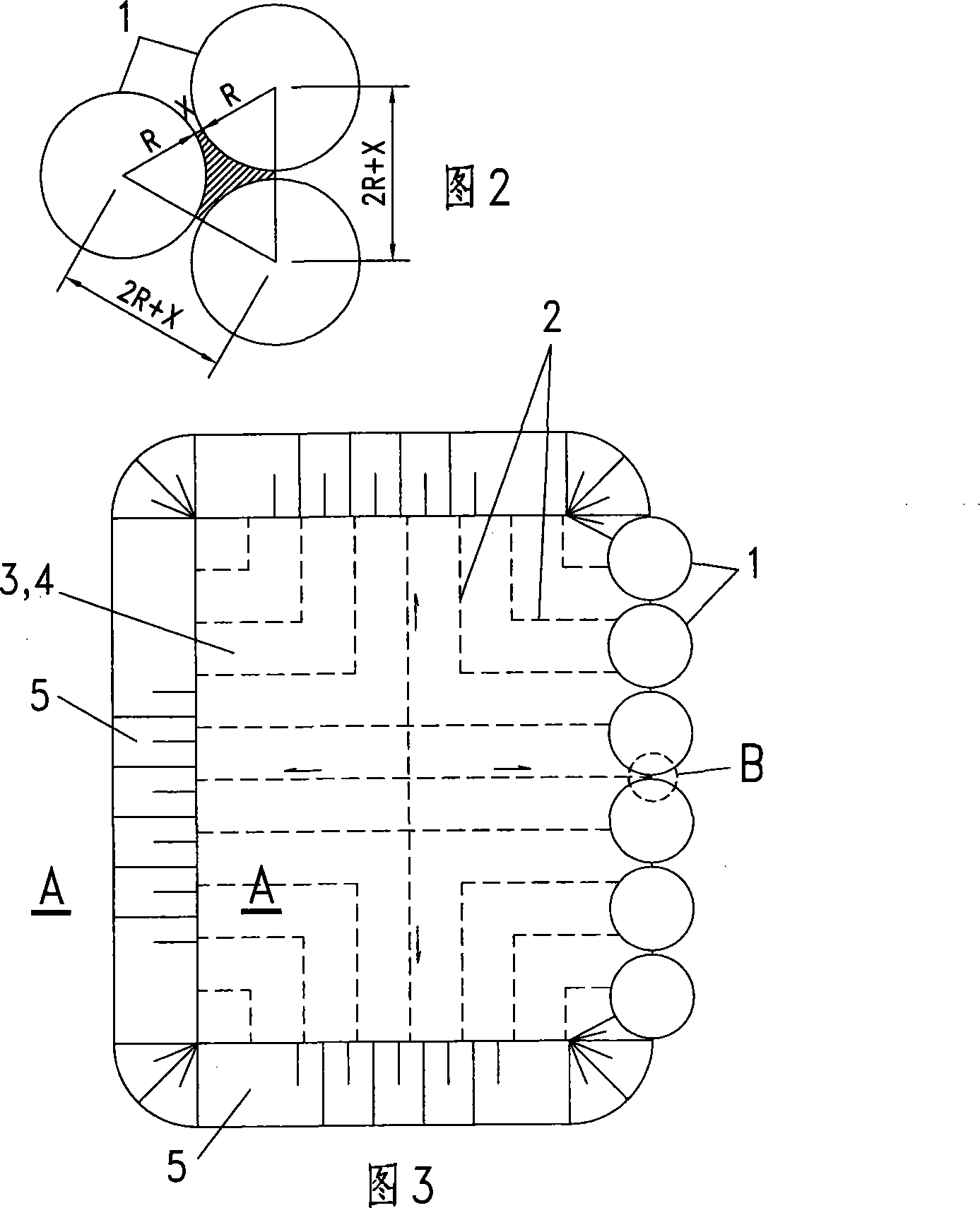Method and device for constructing solid waste landfill yard with group silos
A landfill and population technology, applied in the direction of solid waste removal, etc., can solve the problems of complex composition, difficult treatment process, and high pollution concentration of leachate
- Summary
- Abstract
- Description
- Claims
- Application Information
AI Technical Summary
Problems solved by technology
Method used
Image
Examples
Embodiment Construction
[0048] The following two examples of building solid waste landfills on plains are used to describe the specific implementation methods of solid waste as garbage or solid waste as tailings.
[0049] One, embodiment 1 (solid waste is rubbish 6):
[0050] 1. Design information:
[0051] The diameter of the designed silo is 20 meters, and the average height after filling is 22 meters, so the volume of a single silo is 6911 cubic meters. Based on 460 cubic meters of garbage per day, it takes 15 days (half a month) to fill one silo, and 24 silos can be filled in one year. If the design life of the landfill is 20 years, then a total of 24×20=480 silos need to be built, and the total amount of landfill is: 6911×480=3317280 cubic meters (ie 3.317 million cubic meters).
[0052] If 24 silos are arranged in every row, a total of 20 rows are arranged, and the center line of each adjacent silo is distributed in an equilateral triangle at 21 meters, as shown in Figure 2, R=10 meters; X=1 ...
PUM
 Login to View More
Login to View More Abstract
Description
Claims
Application Information
 Login to View More
Login to View More - R&D
- Intellectual Property
- Life Sciences
- Materials
- Tech Scout
- Unparalleled Data Quality
- Higher Quality Content
- 60% Fewer Hallucinations
Browse by: Latest US Patents, China's latest patents, Technical Efficacy Thesaurus, Application Domain, Technology Topic, Popular Technical Reports.
© 2025 PatSnap. All rights reserved.Legal|Privacy policy|Modern Slavery Act Transparency Statement|Sitemap|About US| Contact US: help@patsnap.com



